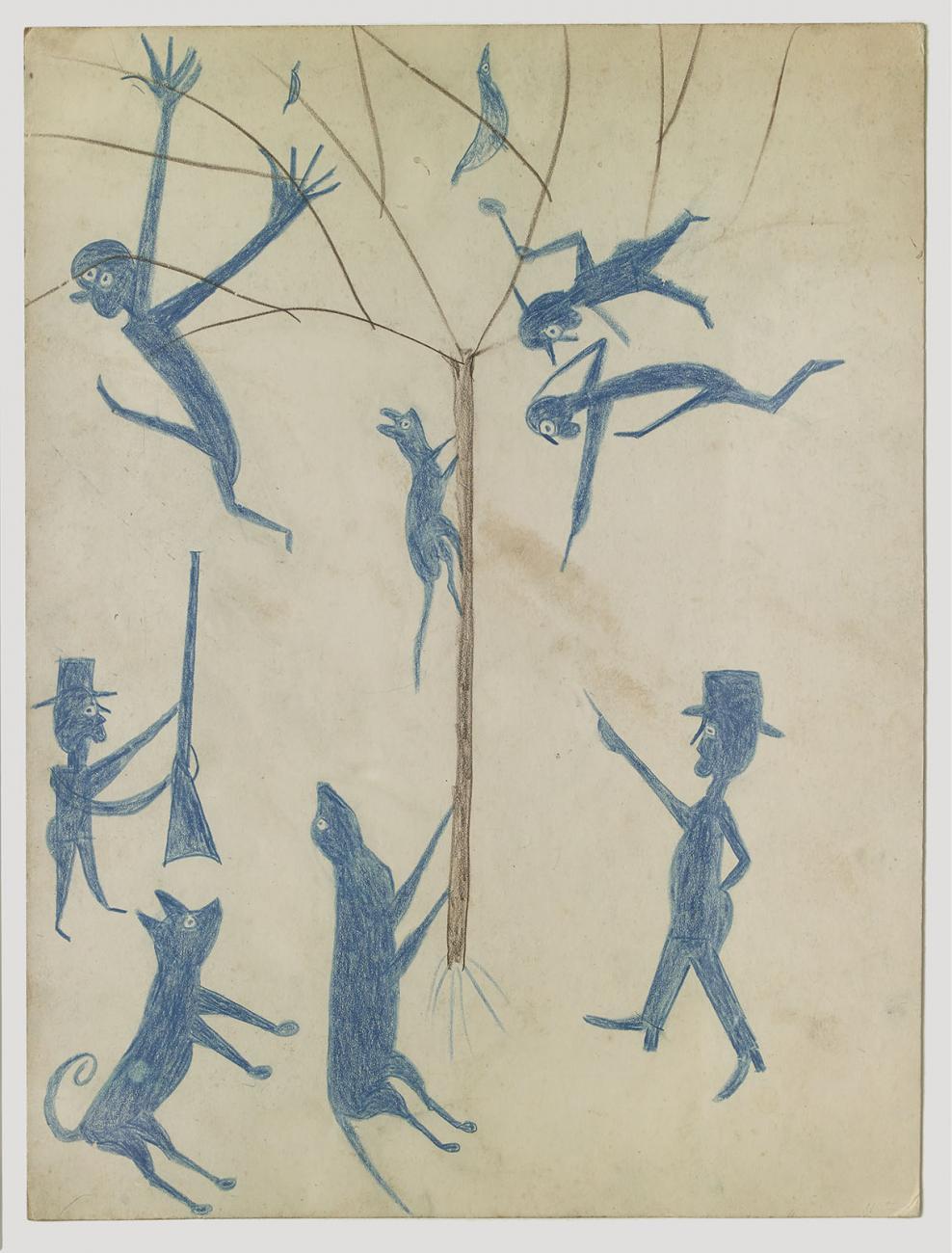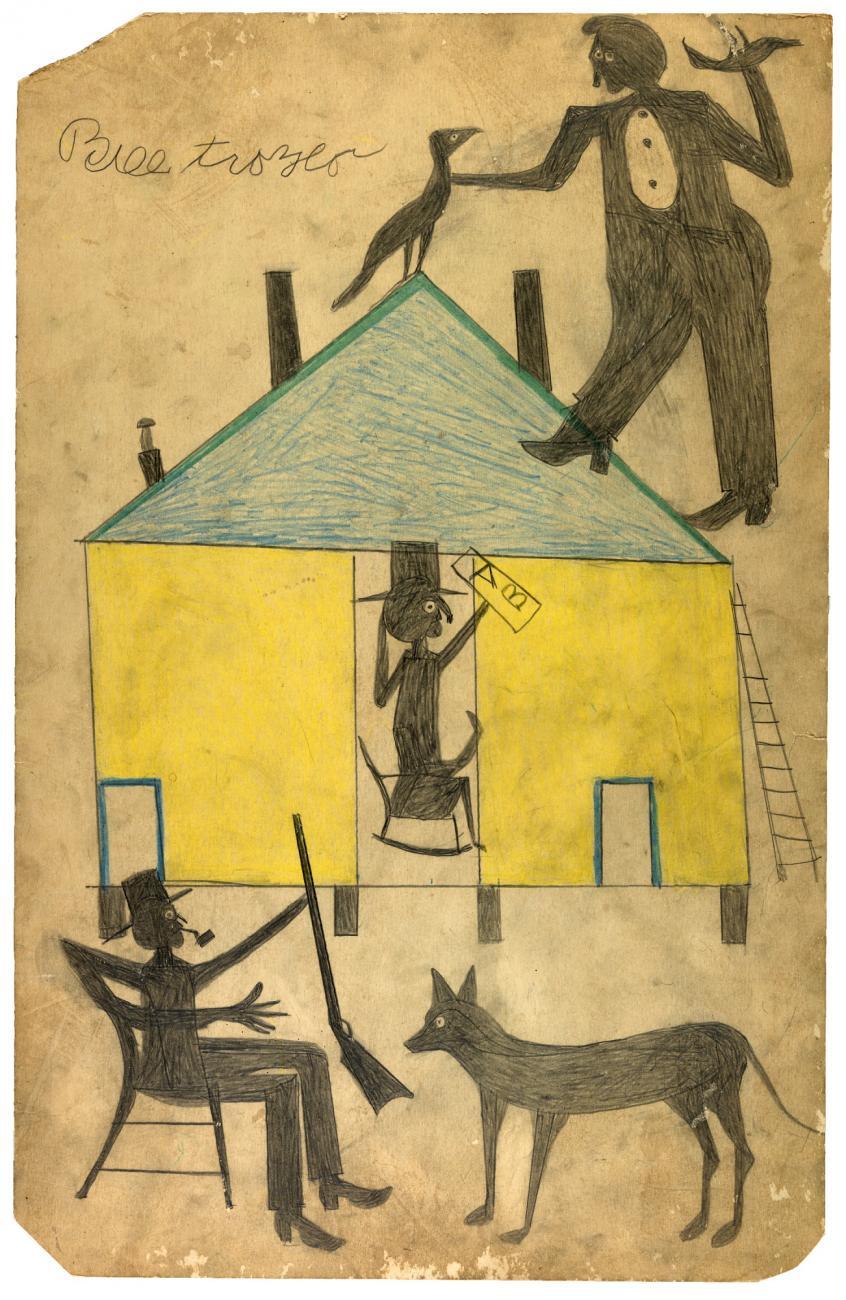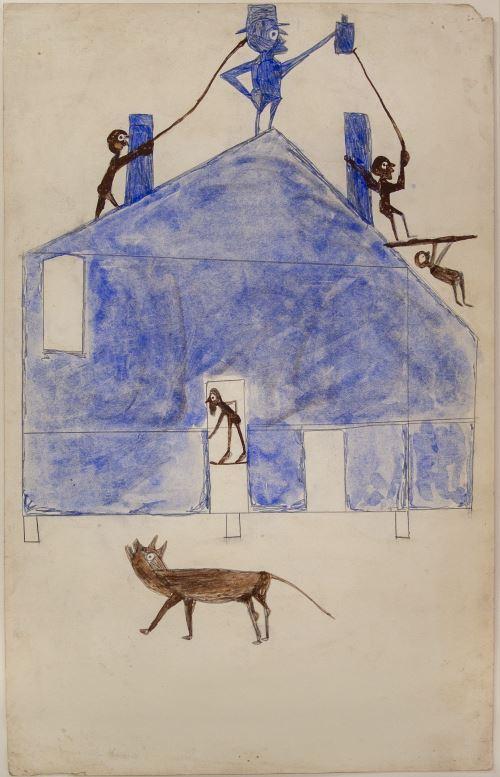BOOK
The exhibition is accompanied by a monograph written by Umberger with an introduction by acclaimed artist Kerry James Marshall, published by the Smithsonian American Art Museum in association with Princeton University Press. The 444-page publication features 205 of Traylor’s artworks along with 83 supplemental illustrations, city maps of Montgomery, family trees, a timeline of key events from Traylor’s life and an extensive bibliography. In Umberger’s carefully researched chapters, she provides the most comprehensive and in-depth study of the artist to date, examining Traylor’s life, art, and powerful drive to bear witness through the means available to him, pictures. Umberger drew on a wealth of historical documents—including federal, state, and county census records, birth and death certificates, and slave schedules—plus interviews with family members and Montgomery locals to clarify the record of Traylor’s personal history and family life. The story of his art opens in the late 1930s, when Traylor first received attention for his pencil drawings on found board, and it concludes with the posthumous success of his oeuvre.
The book is available for purchase in the museum store and in the online bookstore ($60, hardcover).
PUBLIC PROGRAMS
In conjunction with the opening of the exhibition, the museum will premiere Bill Traylor: Chasing Ghosts (2018), a feature-length film by Jeffrey Wolf and Breakaway Films, with a public screening Sunday, Sept. 30, at 3 p.m. followed by a Q&A with the filmmaker and Umberger; the film will be shown again Saturday, March 2, 2019, at 3 p.m.
The museum’s recurring program “Double Take: One Artwork, Two Viewpoints” Tuesday, Nov. 6, at 6 p.m. will feature a conversation between Umberger and Diana Baird N’Diaye, folklorist and curator at the Smithsonian Center for Folklife and Cultural Heritage, about the significance that clothing and personal adornment play in Traylor’s work and in African American history and culture. On Friday, Feb. 22, 2019, the museum will present the first in the Margaret Z. Robson symposium series with a host of invited scholars exploring themes related to the exhibition. Details will be available online later this year.
Friday, March 1, 2019, musicians Jason Moran and Marvin Sewell will perform an original, improvisational jazz duet, Untitled: (Blue), inspired by Traylor’s art; tickets will be available for purchase online Feb. 4, 2019, at 10 a.m.
SELF-TAUGHT ART AT THE SMITHSONIAN AMERICAN ART MUSEUM
The Smithsonian American Art Museum was among the first major museums to collect works by folk and self-taught artists and to advocate for a more inclusive collection that aims to tell an ever-expanding story of America through the art of its people. The museum began broadening traditional ideas of American art in 1970, when it acquired James Hampton’s “Throne of the Third Heaven of the Nations’ Millennium General Assembly” (ca. 1950–64). Since then, the museum has been recognized internationally as a leader in championing the importance of works by untrained artists. The collection has grown with major donations from Herbert Waide Hemphill Jr., Chuck and Jan Rosenak, David L. Davies, the Kallir Family and Douglas O. Robson. Today the collections at the museum, which include thousands of works by self-taught artists and the largest holdings of African American and Latino art of any nationally focused institution, reflect the collective identity of America.
Recent exhibitions featuring the work of untrained artists have included “Mingering Mike’s Supersonic Greatest Hits” (2015), “Untitled: The Art of James Castle” (2014) and “Ralph Fasanella: Lest We Forget” (2014). The museum has had dedicated gallery spaces for folk and self-taught art for more than 45 years. A new installation of these recently renovated galleries opened to the public in 2016.































